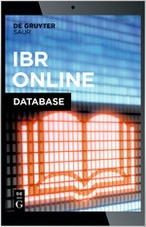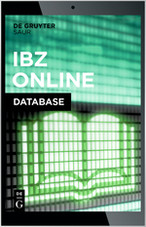- 19 December 2018
Article/Publication Details
Views: 3279
“HEALTH” AND “ILLNESS” IN THE MUSIC: A PROBLEMATIC FIELD
| Title in the language of publication: | „GESUNDHEIT“ UND „KRANKHEIT“ IN DER MUSIK: EIN PROBLEMAUFRISS |
| Author: | DOROTHEA REDEPENNING |
| Issue: |
HORIZON. Studies in Phenomenology. Vol. 7, №2 (2018), 492-508 |
| Language: | German |
| Document type: | Research Article |
| DOI : 10.21638/2226-5260-2018-7-2-492-508 | PDF (Downloads: 2783) |
Abstract
The article synthesizes the cultural, historical and philosophical problem areas arising from the relationship of health / disease and music, with a focus on Western European music of the 19th and early 20th century. A first section gives an introductory overview of the representations of disease in operas and instrumental music. A second section examines medical histories of composers and the question of whether and to what extent illness may have had an effect on the creative process. In particular, works by Robert Schumann are examined in the light of his syphilis disease. Schumann was inspired by E. T. A. Hoffmann’s insane Kapellmeister Kreisler to write a piano cycle Kreisleriana, which gives the impression of insanity with compositional means. But the creation of such music and the structures of this music are anything but “insane”, they are well thought out to evoke the effect of madness. A very different impression brings the so-called Ghost Variations, a small cycle, Schumann’s last work. He believed that the music was given to him by angels – base is a subject that he had previously used in several works. The third part discusses the narrative of “ill art” on the one hand in the perspective it received from the Italian psychiatrist and coroner Cesare Lombroso. Illness, especially mental illness, in his opinion generates “degenerate” art. Illness, especially mental illness, in his opinion generates “degenerate” art. On the other hand, the opposite view is illuminated, pointing the disease, especially mental illness as a sign of the Chosen One. Thomas Mann embraces this perspective when he speaks of “genius-donating disease” in his Doctor Faustus. At the end there is an outlook on the ideological abuse of innovative art.
Key words
Opera, music, dialectics of illness and health, madness, healing by music, Beethoven, Schumann, Doctor Faustus.
References
- Appel’, B. R. (2006). Mozhno li uslyshat’ bolezn’? Ob otnoshenii k pozdnemu tvorchestvu [Is it Possible to Hear the Illness? On the Attitude to Late Works]. Muzikalnaja akademija, 4, 160-162. (in Russian).
- Appel, B. R. (2007). Robert Schumanns Krankheit und Tod im öffentlichen Diskurs: Zur Konstituierung des Schumann-Bildes in der zweiten Hälfte des 19. Jahrhunderts. In H. Loos (Ed.), Robert Schumann und die Öffentlichkeit: Hans Joachim Köhler zum 70. Geburtstag (275-312). Leipzig: Schroeder.
- Critchley, M. (1977). Aesthetic and Synaesthetic Experiences during Musical Perception. In M. Critchley & R. A. Henson (Eds.), Music and the Brain: Studies in the Neurology of Music (217-232). London: William Heinemann Medical Books.
- Franken, F. H. (2012). Die Krankheiten großer Komponisten. Wilhelmshafen: Noetzel.
- Gurevich, S. (2010). Robert Shuman: bolezn’ i tvorchestvo [Robert Schumann: Illness and Creativity]. Muzikalnaja psichologija i psichoterapija, 4 (19), 30-39. (in Russian).
- Hoffmann, E. T. A. (1963). Fantasiestücke in Callots Manier, Kreisleriana. In Poetische Werke in sechs Bänden, Bd. 1. Berlin: Aufbau.
- Jaspers, K. (1922). Strindberg und van Gogh. Leipzig: Bircher.
- Kant, I. (1977). Kritik der Urteilskraft. In Werke in zwölf Bänden, Bd. 10 (73-457). Frankfurt am Main: Suhrkamp.
- Knechtges-Obrecht, I. (1985). Robert Schumann im Spiegel seiner späten Klavierwerke. Regensburg: Bosse.
- Koelsch, S. (2012). Brain and Music. Chichester: Wiley-Blackwell.
- Kunze, S. (1996). Ludwig van Beethoven. Die Werke im Spiegel seiner Zeit; gesammelte Konzertberichte und Rezensionen bis 1830. Laaber: Laaber.
- Litzmann, B. (1971). Clara Schumann, ein Künstlerleben nach Tagebüchern und Briefen, Bd. 2, Ehejahre 1840-1856. Hildesheim: Olms.
- Lombroso, C. (1864). Genio e follia, in rapporto alla medicina legale, alla critica ed alla storia [Genious and Madness in Medicine Legacy, Criticism and History]. Milano: Giuseppe Chiusi. (in Italian).
- Mann, T. (1990). Doktor Faustus. Frankfurt: Fischer.
- Nordau, M. (1892-1893). Entartung. Berlin: Duncker.
- Olander, D. M. (2008). Illness Narratives in Nineteenth-Century German Instrumental Music. Retrieved from http://diginole.lib.fsu.edu/islandora/object/fsu:180513/ datastream/PDF/view
- Osterwold, M. (2002). Muzika: Musikbezogene Werke psychisch Kranker und ihre Bearbeitung durch zeitgenössische Komponisten. Heidelberger Jahrbücher, 46, 225-244.
- Pfitzner, H. (1920). Die neue Ästhetik der musikalischen Impotenz. Ein Verwesungssymptom. München: Verlag der Süddeutschen Monatshefte.
- Radkau, J. (2000). Das Zeitalter der Nervosität. Deutschland zwischen Bismarck und Hitler. München: Econ-Ullstein-List-Verl.
- Saary, M. (1983). Persönlichkeit und musikdramatische Kreativität Hugo Wolfs. Tutzing: Hans Schneider.
- Sandblom, P. (1992). Creativity and Disease: How Illness Affects Literature, Art and Music. New York: Marion Boyars.
- Sartin, J. (2010). Contagious Rhythm: Infectious Diseases of 20th Century Musicians. Clinical Medical Research, 8(2), 106-113.
- Seiffert, W.-D. (1999). Robert Schumanns Thema mit Variationen Es-Dur, genannt „Geistervariationen“. In S. Kurth & Bernd (Eds.), Compositionswissenschaft: Festschrift Reinhold und Roswitha Schlötterer zum 70. Geburtstag (189-214). Augsburg: Wißner.
- Storr, A. (1992). Music and the Mind. New York: The Free Press.
- Trethowan, W. H. (1977). Music and Mental Disorder. In M. Critchley (Ed.), Music and the Brain (398-432). London: William Heinemann Medical Books.

This work is licensed under a Creative Commons Attribution-NonCommercial 4.0 International License.

|
|
|
|
|

|
|
|
|
|

|
|
|
|
|
|
|
|
|
|
|
|
|
|
|
|
|
|
|
|
|
|

|
|
|
|
|
|
|
|
|
|
|
|
|
|
|
|
|
|
|
|
|
|
|
|
|
|
|
|

|

|
Social networks:





